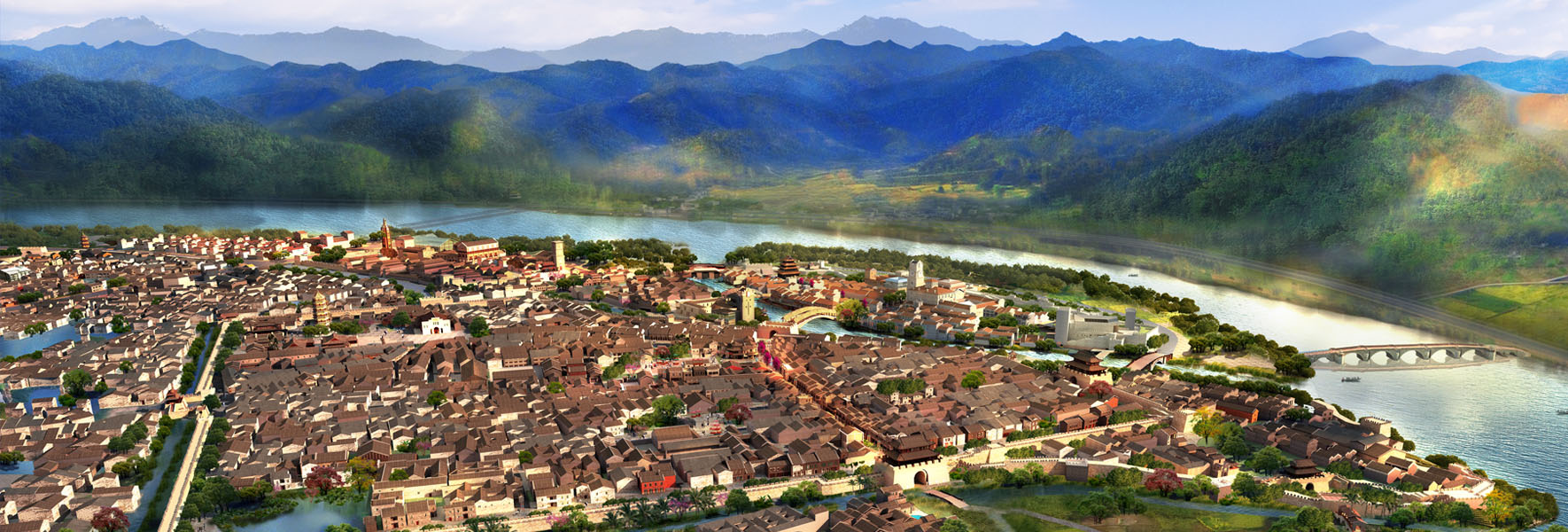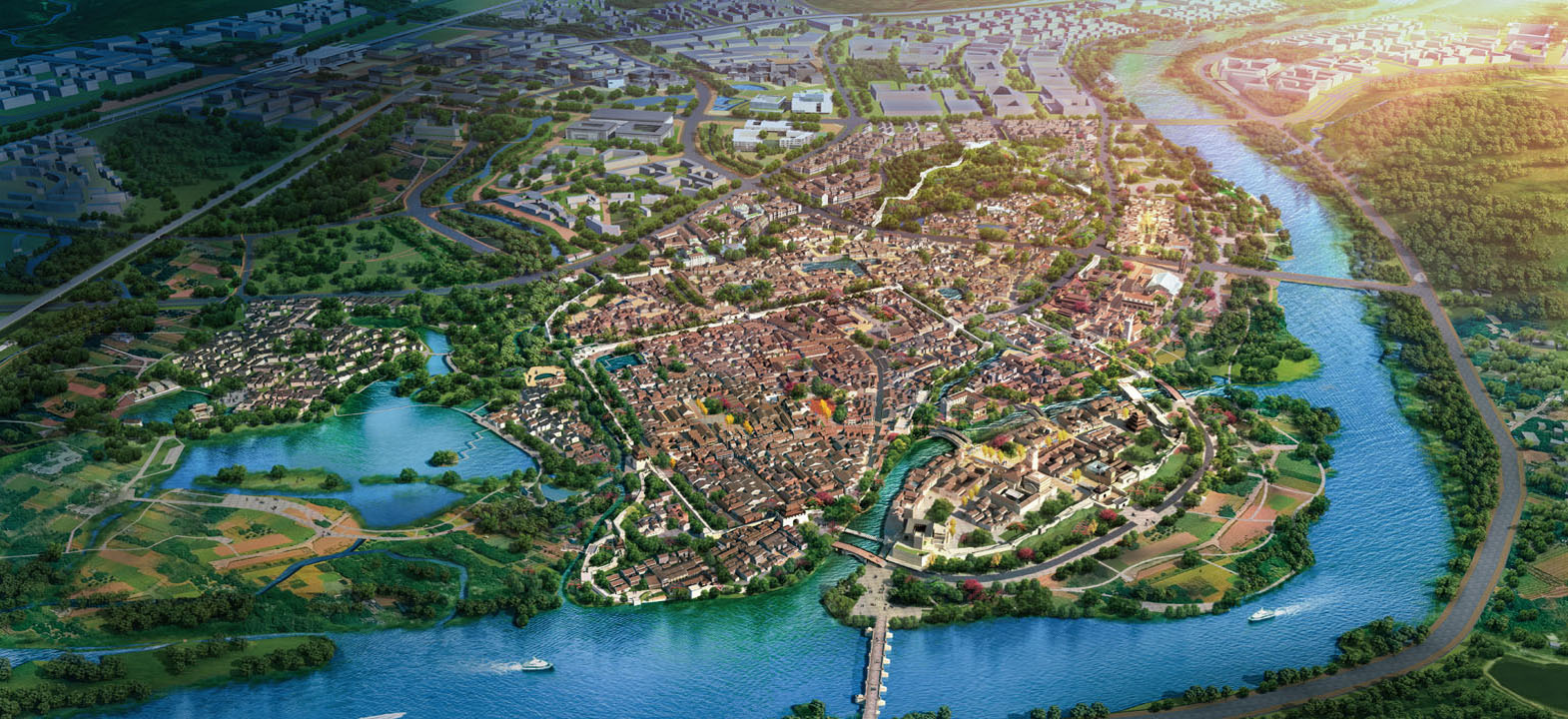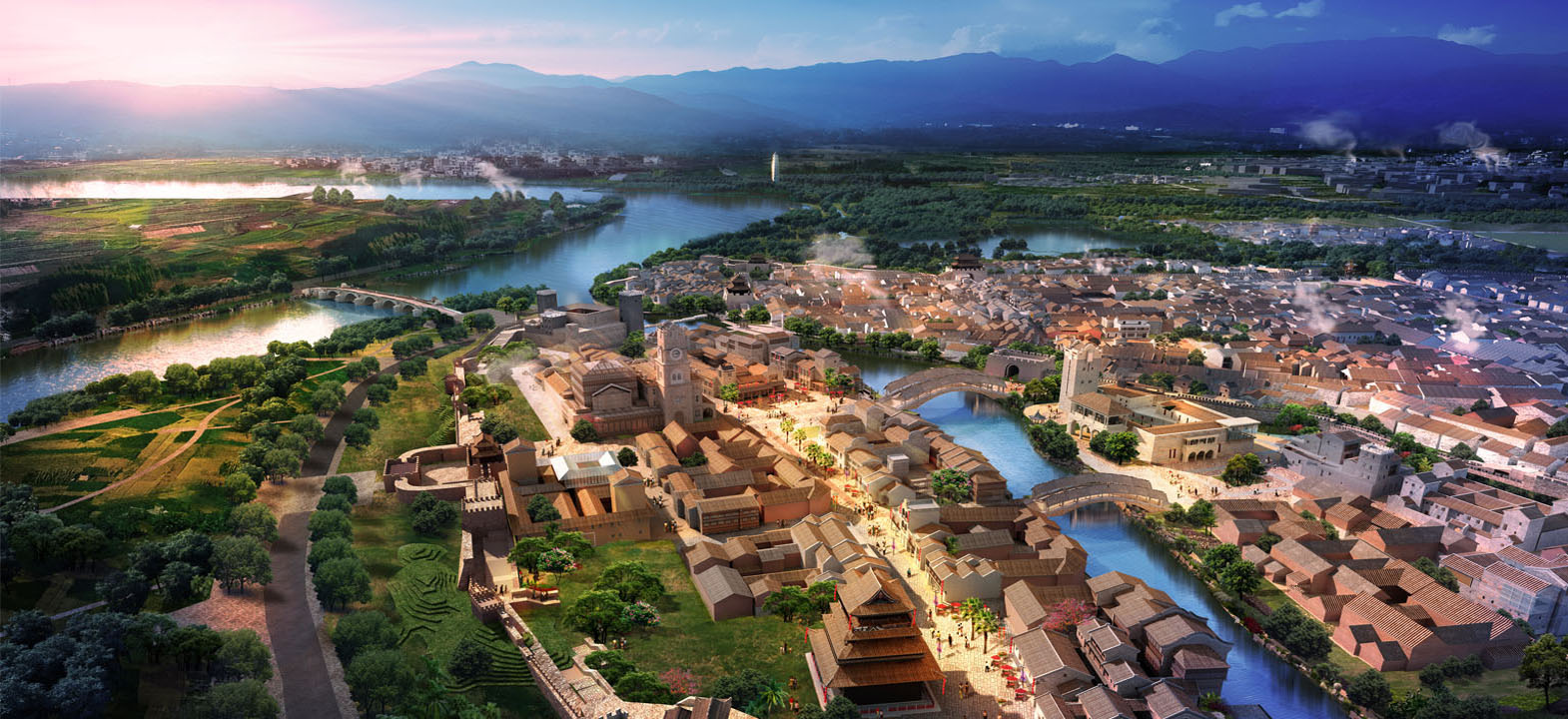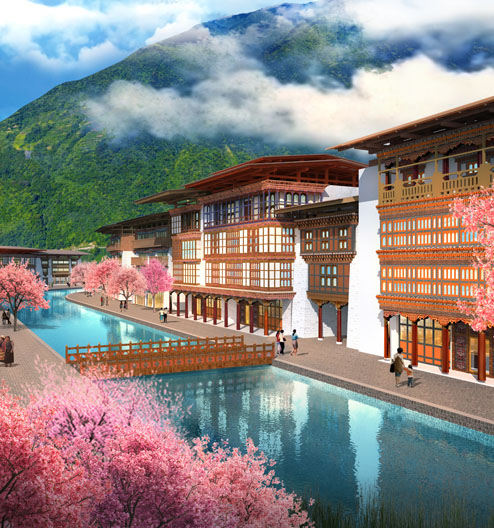Tuocheng ancient town
Tuocheng, known as the “ancient town of Qin Dynasty” and “famous town of Han and Tang Dynasty”, is the only well preserved ancient city among the four ancient towns in the south of the five ridges in the Qin Dynasty. It is the earliest county in the history of the south of the five ridges and the "first ancient town in the south of the five ridges”.
Tuocheng is located in the northeast of Guangdong Province and the southwest of Longchuan County. Tuocheng is not only the place where Zhao Tuo, the king of Nanyue prospered, but also the combination of Central Plains culture and Baiyue culture exchange in the Qin Dynasty. It is also an important political, economic, cultural and military town in the middle and upper reaches of the Dongjiang River for thousands of years. It is also the state administration from the South Han Dynasty to the early Ming Dynasty. Since Zhao Tuo established Baiyue as the first county magistrate of Longchuan in the 33rd year of the first emperor of the Qin Dynasty (214 BC), Tuocheng has a history of more than 2000 years. As early as more than 4000 years ago, there were ancestors here to reproduce and create human civilization.
Tuocheng town was built in the Qin Dynasty and governed by the state from the Southern Han Dynasty to the early Ming Dynasty. Tuocheng is one of the first 11 historical and cultural towns in Guangdong Province. The key to develop Tuocheng is to practice integrated urban planning. Tuocheng completely retained the Xianqian street, Nanmen street, Dadongmen street, Xiaodongmen street, Baisui street. Besides, there are historical sites such as ancient city base in the Qin Dynasty, Yue Wang well, Zhao Tuo's former residence, Ma Qian Gang.; the Tang Dynasty's Zhengxiang tower; the Song Dynasty's governing hall; the Ming and Qing Dynasties Chenghuang temple, Yue Wang temple, Confucian temple, Donghe river, Xianta bridge, Xin tower, examination hall and other historical sites and ancient buildings.
Based on the design theory of urban humanism, Prof. Chen Keshi and his design team positioned Tuocheng based on wetland and farmland Landscape, on the basis of Zhao Tuo, the core figure, with Hakka culture and Lingnan fashion as characteristics, and with modern cutting-edge technology and culture as means, highlighted the historical culture of Tuocheng, integrated tourism, vacation, leisure, entertainment, food, creativity, art and residence to build a complex tourism town with international standards, realizing the vision of “Pingyao in the north and Tuocheng in the South”.
The historical and traditional villages in Tuocheng area mostly adopt the comb style structure of southern Guangdong villages, with an orderly layout. The village is mainly composed of folk houses, ancestral halls, gatehouses, and archways. The village is integrated with ancient trees, fields, ponds, hills, rivers and other natural features, quiet and elegant, full of ancient interest, with high historical, scientific and artistic value. Hills and mountains account for 70% of the total area of the town. Hills are the theme of Tuocheng. The Tuocheng mountain range is stretching from northeast to southwest. The characteristics of Tuocheng range are “branches on the mountain, mountains in the mountain, mountains on the mountain”. It is also one of the main reasons why Tuocheng was located here in ancient times, easy to defend and difficult to attack.
Mountains in the north and south of the site are overlapped, mountains in the West and East are protected, the middle is a small plain. The Dongjiang river runs through the north and south, the whole terrain is high in the north and low in the south, forming the overall ecological pattern of mountains, water, fields, and town in the region.
The water resources in the region are rich and distributed evenly. There are about 18 rivers in Tuocheng, all of which are freshwater rivers flowing out all the year-round, forming a tree-type water system. The main river is Dongjiang river. Other small rivers and streams are injected into the Dongjiang river. In the planning area, the Dongjiang river coastline is gentle, water-friendly, and has a wide vision, with good natural landscape conditions, which can create a public water-friendly coastline.
As a water-friendly space full of humanistic characteristics, water bank is the most poetic place. Within the planning scope, the existing fish ponds and other water systems should be preserved as much as possible, and the moat system outside the song city wall should be restored. The planning and design goal is to ensure the integrity of this special character, build a continuous and organic urban water system, form a “ water-friendly Tuo city”, and let the city return to the water environment.
Tuocheng town has witnessed more than 2000 years of human history. There are many places of interest, such as Yuewang well, Zhengxiang Tower, Confucius temple, Yuewang temple, etc., which are well-known and show the local rich and unique human spirit. A temple can be seen in the centenary street, Hengjie street and Zhongshan street of Tuocheng town. Today, there are 179 surnames in Tuocheng town with a population of more than 40,000. Experts believe that this is enough to prove that Tuocheng town has "the first village with Chinese surname". Tuocheng town is still a rare place in China where ancient academic institution and examination hall are completely preserved. Tuocheng college was built in the Ming Dynasty and rebuilt in the seventh year of Kangxi. The examination hall is an important place for students from Longchuan County and Heyuan, Heping, Lianping, Zijin, Xingning, Wuhua, and other counties to attend the examination. Tuocheng examination hall is the only existing ruin in Guangdong Province.
The core area of Tuocheng ancient town takes the existing ancient city of Song Dynasty as the core, and the design team carries out the overall design idea with the design concept of form integrity and landscape first. In the design plan, it tries to repair the ancient town wall, not only to restore the ancient sites but also to provide modern practical functions. Tuocheng was built in the Qin Dynasty by Zhao Tuo when he was the county magistrate. It is a small-scale earthen town with a square plane and rammed earth and its perimeter is only about 800m. After years of changes, in today's Dadongmen and other places, you can also see part of the city base of that year. The existing old streets in the city can be seen vaguely the ancient and simple features of Tuo city in Song and Ming Dynasties.
Streets and lanes are the venation of urban development. Improving and combing the space of streets and lanes is an important strategy for the development of this ancient town. According to the historical culture, current traffic conditions and planning positioning, the 3 km2 plan is divided into three zones: the East Zone, the middle zone and the west zone. The urban space system in the old town central area of Tuocheng is based on the principle of restoring the traditional urban space and creating the most valuable area of the whole Tuocheng tourist town. The positioning of the east area is mainly to construct tourism supporting facilities, providing tourist reception, creative workshops, homestay accommodation, etc.
At present, Tuocheng is making an effort to promote the construction of international tourism town, develop characteristic tourism products and promote scenic spots





